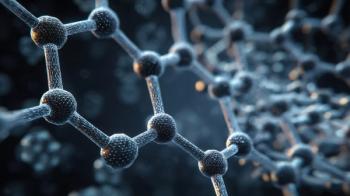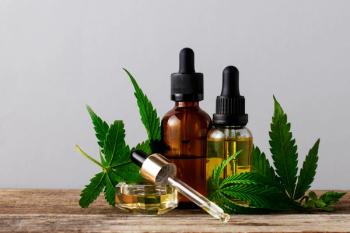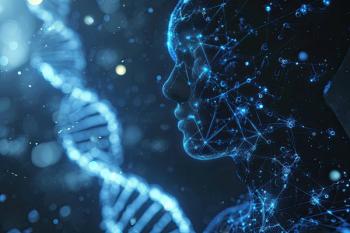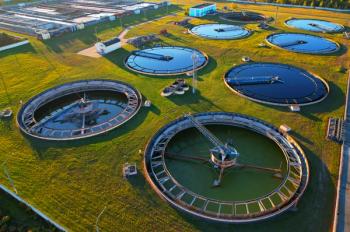Key Points
- Using gas chromatography, researchers confirmed the presence of polychlorinated biphenyls (PCBs) in chinstrap penguins and krill from Deception Island, Antarctica. Adult penguins showed the highest PCB accumulation in liver and muscle tissues, while chick brains had the highest concentrations, highlighting significant bioaccumulation even in remote ecosystems.
- Despite Antarctica's isolation, persistent organic pollutants (POPs), including PCBs, were detected—likely transported via long-range atmospheric and oceanic currents. The findings build on decades of evidence that even the most remote regions are impacted by global contamination.
- Due to their ecological characteristics—top trophic status, longevity, and diet—Antarctic penguins serve as strong indicators of environmental contamination. The study found that “others-non-dioxin-like” PCBs were most prevalent, particularly in liver tissues, underlining the need for continued monitoring and regulatory reassessment.
In order to acquire data regarding the presence of polychlorinated biphenyls (PCBs) in Antarctica, a research team made up of members from the University of Murcia (Murcia, Spain), the Carlos III Health Institute (Madrid, Spain), and the University of Siena (Siena, Italy) evaluated the concentration of PCBs in chinstrap penguins (Pygoscelis antarctica) and krill (Euphausia superba) from Deception Island (South Shetland Islands, Antarctica). The relative toxic potential of toxic mono-ortho PCBs congeners in 34 samples of penguin tissues (adult liver and chick brain samples) was analyzed with gas chromatography (GC) and assessed using the Toxic Equivalency Factor (TEF) approach, as well as their Toxic Equivalent (TEQ) concentrations calculated. A paper based on this research was published in Toxics (1).
Long regarded as one of the last pristine regions on Earth, Antarctica has several natural barriers, such as water masses and atmospheric currents, that were thought to protect it from pollution. However, the viewpoint that this continent was totally unpolluted began to be challenged in the 1960s. In 1964, the pesticide dichlorodiphenyltrichloroethane and some of its related compounds were identified in tissue samples of Adelie penguins and a Crabeater seal. This was notable because pesticides had never been used on the continent (2).
Since then, many other persistent organic pollutants (POPs) have been identified in Antarctic samples, which shows that even what was considered one of the most isolated places on the planet is not safe from the global effects of contamination (3–5). Furthermore, POPs might also be transported to these regions through long-range atmospheric transport and oceanic transport. However, the number of transported POPs seems much lower, to a significantly lesser extent, through the involvement of pelagic organisms and migratory birds (6).
Antarctic penguins are potential agents in the monitoring of global environmental pollution, as they possess many characteristics which make them effective sentinels in other regions. Being top predators and long-lived species, they are subject to biomagnification and bioaccumulation. Furthermore, they have wide distribution ranges with ample populations and an adequate body size which facilitates the sampling process. In addition, they can integrate contamination over both time and space (7). In addition, various penguin species typically feed on krill (as well as fish and squid), so the monitoring of their diet can also provide researchers with insights into the bioaccumulation of contaminants (8).
A total of 34 penguin tissue samples were collected during the Antarctic campaigns from 2007 to 2010 and preserved frozen at −20 °C in individual polyethylene bags until they were analyzed with GC. The team studied liver, kidney, muscle, heart, and brain tissue from four adult and six chick specimens. Due to the low amount of chick samples, some tissues were homogenized to obtain 5 g pools for the analyses. In addition, samples of krill were analyzed and obtained from the stomach contents of the penguin specimens (1).
The researchers state in their paper that their results confirm the presence of PCBs in chinstrap penguins and krill from Deception Island, with the adult of the species primarily accumulating PCBs in the liver and muscle, and the chicks exhibiting the highest levels in their brains, and the PCB levels in the krill were lower than those found in krill from King George Island (another island in the Antarctic [9]) and the Ross Sea (a deep bay of the Southern Ocean in Antarctica, and the southernmost sea on Earth [10]).
In addition, a distribution analysis of PCBs in penguins according to Regulation 2013/39/UE (11) and Commission Regulation (EU) No 277/2012 (12) was also performed, with PCBs categorized into three groups (dioxin-like-mono-ortho, non-dioxin-like-indicators, and others-non-dioxin-like). The data compiled indicated that the content of the others-non-dioxin-like group was generally higher than that of the other two PCB groups for both adults and chicks, with the liver consistently exhibited the highest proportion of PCBs from the others-non-dioxin-like group. There is a need for further research and investigation, the researchers state (1).
References
- Motas, M.; Jerez-Rodríguez, S.; Veiga-Del-Baño, J. M. et al. PCBs in Chinstrap Penguins from Deception Island (South Shetland Islands, Antarctica). Toxics 2025, 13 (6), 430. DOI: 10.3390/toxics13060430
- 2. Sladen, W. J.; Menzie, C. M.; Reichel, W. L. DDT Residues in Adelie Penguins and a Crabeater Seal from Antarctica. Nature 1966, 210 (5037), 670-673. DOI: 10.1038/210670a0
- Bargagli, R. Environmental Contamination in Antarctic Ecosystems. Sci. Total Environ. 2008, 400 (1-3), 212-226. DOI: 10.1016/j.scitotenv.2008.06.062
- van Boxtel, A. L.; Kamstra, J. H.; Fluitsma, D. M. et al. Dithiocarbamates are Teratogenic to Developing Zebrafish Through Inhibition of Lysyl Oxidase Activity. Toxicol. Appl. Pharmacol. 2010, 244 (2), 156-161. DOI: DOI: 10.1016/j.taap.2009.12.028
- Kim, D. H.; Lee, H.; Kim, K. et al. Persistent Organic Pollutants in the Antarctic Marine Environment: The Influence Impacts of Human Activity, Regulations, and Climate Change. Environ. Pollut. 2024, 363, 125100. DOI: 10.1016/j.envpol.2024.125100
- Wild, S.; Eulaers, I.; Covaci, A. et al. South Polar Skua (Catharacta maccormicki) as Biovectors for Long-Range Transport of Persistent Organic Pollutants to Antarctica. Environ Pollut. 2022, 292 (Pt A), 118358. DOI: 10.1016/j.envpol.2021.118358
- Morales, P.; Roscales, J. L.; Muñoz-Arnanz, J. et al. Evaluation of PCDD/Fs, PCBs and PBDEs in Two Penguin Species from Antarctica. Chemosphere 2022, 286, 131871. DOI: 10.1016/j.chemosphere.2021.131871
- Herman, R. W.; Valls, F. C.; Hart, T. et al. Seasonal Consistency and Individual Variation in Foraging Strategies Differ Among and Within Pygoscelis Penguin Species in the Antarctic Peninsula Region. Marine Biology 2017, 164, 1-13.DOI: 10.1007/s00227-017-3142-9
- King George Island (South Shetland Islands). Wikipedia.https://en.wikipedia.org/wiki/King_George_Island_(South_Shetland_Islands) (accessed 2025-06-26).
- Ross Sea. Wikipedia. https://en.wikipedia.org/wiki/Ross_Sea (accessed 2025-06-26).
- EC. Directive 2013/39/EU of the European Parliament and of the Council of 12 August 2013 Amending Directives 2000/60/EC and 2008/105/EC as Regards Priority Substances in the Field of Water Policy. https://eur-lex.europa.eu/eli/dir/2013/39/oj/eng (accessed on 2025-02-12).
- EU. Commission Regulation (EU) No 277/2012 of 28 March 2012 Amending Annexes I and II to Directive 2002/32/EC of the European Parliament and of the Council as Regards Maximum Levels and Action Thresholds for Dioxins and Polychlorinated Biphenyls Text with EEA Relevance. 2012. https://eur-lex.europa.eu/legal-content/EN/TXT/?uri=celex%3A32012R0277 (accessed 2025-02-12).






